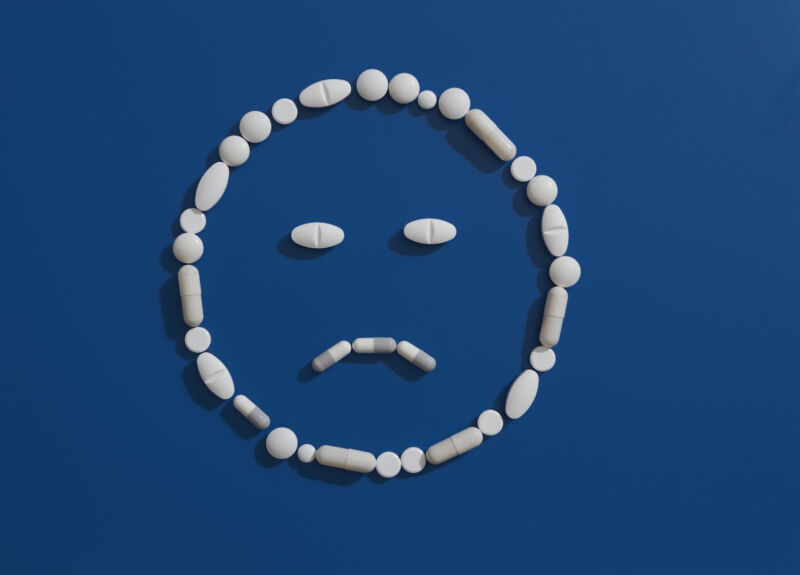
Jianhua Guo is a professor at the Australian Centre for Water and Environmental Biotechnology. His research focuses on removing contaminants from wastewater and the environmental dimensions of antimicrobial resistance. One of those dimensions is the overuse of antibiotics, which promotes resistance to these drugs.
Guo wondered if the same might hold true for other types of pharmaceuticals as well. His lab found that they definitely do. Specific antidepressants—SSRIs and SNRIs—promote resistance to different classes of antibiotics. This resistance is heritable over 33 bacterial generations, even once the antidepressant is removed.
So much work
Antidepressants are among the most prescribed and ingested drugs there are. They account for roughly 5 percent of the pharmaceutical market share—about the same as antibiotics—and four of the top 10 most prescribed psychiatric meds in the US.
To assess antidepressants’ potential effects on antibiotic resistance, Guo’s lab grew E. coli in the presence of physiologically relevant concentrations of five commonly prescribed antidepressants for 60 days and measured how well the bacteria grew on agar plates infused with different antibiotics. They looked at antibiotics with different mechanisms of action: some that worked by inhibiting DNA synthesis in the bacteria, others that worked by inhibiting protein synthesis, and others by inhibiting cell wall synthesis. They found that the antidepressants they tested induced resistance to multiple antibiotics—within a day.
This group did a ton of experiments to try to determine how this was happening, starting by sequencing the DNA, mRNA, and proteins of the antibiotic-resistant bacteria. They saw that the antidepressants caused the bacteria to produce reactive oxygen species, which can damage cellular components. This seemed to be essential for the evolution of antibiotic resistance, as the resistance didn’t arise when cells were grown without oxygen. The drugs also caused the bacteria to express more efflux pump proteins that shunt antibiotics out of the cell. Genetic mutations in the bacterial chromosomes that promoted multi-drug resistance were also more common.
The scientists then looked at time-lapse microscopy images of DNA moving between bacterial cells, a process that can enable the rapid spread of resistance genes. Guess what? The SSRI sped it up and increased its occurrence, allowing resistant bacteria to spread the resistance horizontally to their peers (in addition to vertically to their progeny).
Persistence can lead to resistance
The antidepressants also increased the percentage of bacterial cells that persist in the presence of high concentrations of antibiotics. These “persisters” aren’t quite antibiotic resistant, exactly—they have none of the genetic mutations that confer antibiotic resistance. They are still normal bacteria; they just randomly have a higher tolerance for antibiotics than their peers. The researchers generated a mathematical model of bacterial evolution, which suggests that antidepressants increase the rate at which both normal bacteria and persisters evolve into full-fledged multi-drug-resistant strains.
Antibiotic resistance is an enormous threat to human health. Since antidepressants are prescribed and used in such massive quantities, the fact that they can induce antibiotic resistance should not be considered one of the more trivial of their side effects. It might even be taken into account in the design of new, more effective antidepressants.
PNAS, 2023. DOI: 10.1073/pnas.2208344120
reader comments
105